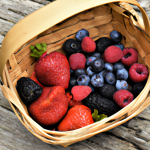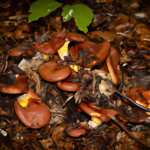
Medicinal Plants: Nature’s Pharmacy for Self-Reliance
When it comes to being self-reliant and prepared for emergencies, knowledge of medicinal plants can be a game-changer. In a world where access to modern medicine may become limited or unreliable, knowing how to identify and use common medicinal plants can mean the difference between life and death. Nature has provided us with a vast pharmacy of healing plants that can be foraged right in our own backyards or in the wild. Let’s take a closer look at some of these powerful plants and their medicinal uses:
1. Plantain (Plantago major)

Commonly found in lawns and open fields, plantain is known for its soothing and healing properties. The leaves can be crushed and applied topically to treat insect bites, burns, and minor wounds. Plantain can also be brewed into a tea to alleviate digestive issues and respiratory conditions like coughs and bronchitis.
2. Calendula (Calendula officinalis)

Calendula, also known as marigold, is a vibrant flower with potent healing properties. The petals can be infused in oil or water to create salves, creams, and teas that promote skin health and aid in wound healing. Calendula is particularly effective for soothing sunburns, rashes, and skin irritations.
3. Elderberry (Sambucus nigra)

Elderberry is a powerful immune-boosting plant that has been used for centuries to combat colds, flu, and respiratory infections. The berries can be harvested and turned into syrups, tinctures, or teas, providing a natural defense against viral illnesses. Elderberries are rich in antioxidants and have anti-inflammatory properties.
4. Yarrow (Achillea millefolium)

Yarrow is a versatile and potent medicinal plant that can be found in meadows, fields, and along roadsides. It has both antiseptic and anti-inflammatory properties, making it an excellent remedy for wounds and cuts. Yarrow can be used as a poultice, a tea, or a tincture to stop bleeding, alleviate menstrual cramps, and relieve digestive discomfort.
5. Echinacea (Echinacea purpurea)

Echinacea is a well-known herb for strengthening the immune system and fighting off infections. It can be used as a preventative measure during cold and flu season or at the onset of symptoms. Echinacea tinctures, teas, or capsules are widely available and can help reduce the severity and duration of illnesses.
6. Stinging Nettle (Urtica dioica)

Despite its initial sting, stinging nettle offers a plethora of health benefits. The leaves and roots can be used for a variety of purposes, including relieving allergy symptoms, reducing inflammation, and purifying the blood. Stinging nettle can be cooked, brewed into tea, or taken as a supplement.
7. Chamomile (Matricaria chamomilla)

Chamomile is a gentle yet powerful herb that promotes relaxation and aids in digestion. The flowers can be brewed into a calming tea that soothes anxiety, relieves indigestion, and encourages a good night’s sleep. Chamomile essential oil can also be used topically to alleviate skin irritations and promote wound healing.
Remember, before using any medicinal plant, it is crucial to educate yourself on proper identification and usage. This article is just a starting point, and I encourage you to continue learning about the incredible world of medicinal plants.
In times of uncertainty and limited access to modern medicine, the ability to rely on the healing power of nature can provide comfort and security. Start familiarizing yourself with these common medicinal plants today, and take an active role in your self-reliance journey.



GIPHY App Key not set. Please check settings